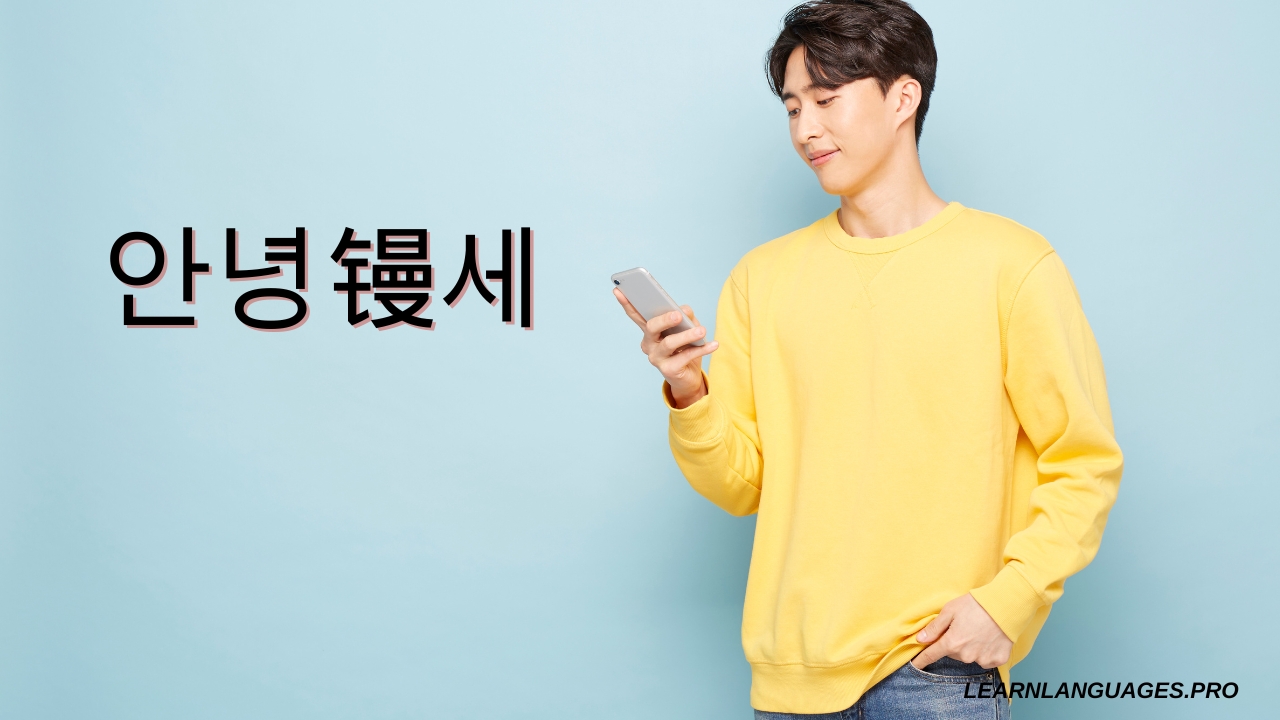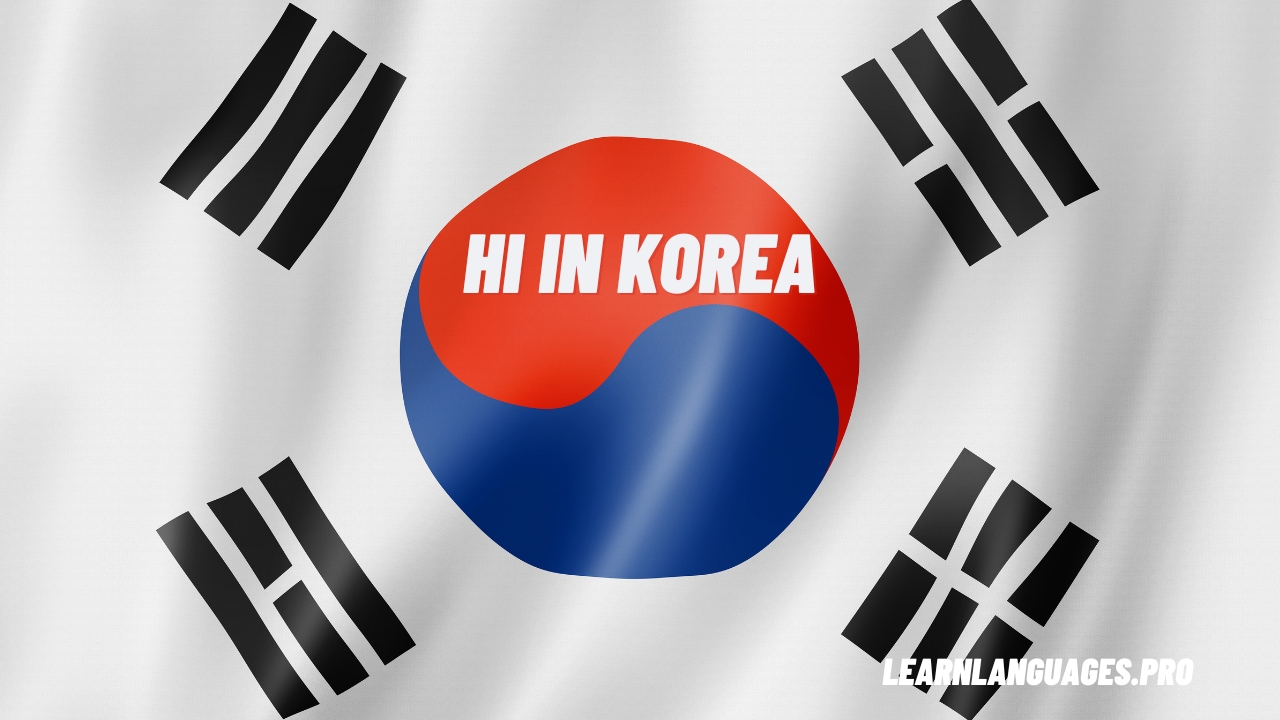One of the simplest yet most significant ways to engage with a different culture is to learn how to greet people in their native tongue. Knowing how to say Hi in Korea is crucial for anyone interested in Korean language or culture or who intends to travel to South Korea. In addition to teaching you how to say Hi in Korea, this guide will explore the subtleties of greetings based on the context, level of formality, and speaker-to-speaker relationship.

Basic way to say Hi in korea : “Annyeong” (안녕)
“안셕” (Annyeong) is the most basic way to say hi in Korean. Hi in kora is the equivalent of “hi” or “hello” in English and is a relaxed and informal way to greet someone. Nonetheless, it is usually employed in casual contexts or when addressing friends, younger individuals, or peers.
For example:
When you run into Annyeong, a close friend!
Sending a text to your best friend or sibling: Annyeong!
Remember that “效煕” is a flexible term that can also be used to bid someone farewell in casual contexts. It is one of the first words that Korean learners learn because of its dual meaning.
Introducing yourself as “Annyeonghaseyo” (안녕았세)
Communication is heavily influenced by hierarchy and respect in Korea. “안녕镘세” (Annyeonghaseyo) is the appropriate way to greet someone who is older than you, a stranger, or someone in a formal situation. This is the most common and courteous way to say “hello” and works in most contexts.
For instance:
Saying “Annyeonghaseyo” to a teacher or coworker
Making an official meeting introduction: Annyeonghaseyo!
The expression blends the colloquial “안셕” (Annyeong) with the polite “았세,” which means “do” or “are you.” They roughly translate to “Are you doing well?” when combined.
Korean Situational Greetings

Depending on the situation, the time of day, and the person you are speaking to, Korean greetings can change. Here are a few particular instances:
- Greetings
It is the formal method of saying Hi in Korea, you can say “좋은 아침입니다” (Joeun Achimimnida), even though “안녕았세暔” is effective throughout the day. This expression means “Good morning” and is frequently used in formal or business contexts.
Greetings from Joeun Achimimnida, your boss at work!
- Taking Phone Calls
An another way to say Hi in Korea is that they use the phrase “여보세요” (Yeoboseyo) when taking phone calls. Specifically, this is used for phone calls rather than face-to-face greetings.
Yeoboseyo, taking a call from a friend or an unknown number!
- Informal Salutations with Friends
When speaking with peers or close friends, you may hear:
“잘 지냈어?” (Jal Jinaesseo?) He asked, “How have you been?”
“子镴?” (Mwohae?) “What are you up to?” we asked.
In everyday conversations or informal text messages, these are frequently combined with “안셕” (Annyeong).
How to Say Hi in Korean Similar to Native Non-Verbal Cues, Koreans frequently use non-verbal cues in addition to their spoken greetings.
For instance:
Bowing: In formal settings, it is customary to bow slightly to demonstrate respect.
Smiling: “안녕” (Annyeong) combined with a smile makes a big impression in casual or friendly situations.
Handshakes: Although they are less common, greetings in business settings may be accompanied by handshakes, particularly when interacting with foreign colleagues.
Modifying Your Voice
It matters how you greet them. While a calm and courteous tone is preferred in formal situations, you can be more upbeat and animated in informal settings.
Different Greetings by Region in Korea
Although the common greetings are understood by everyone, there may be minor dialects or variations depending on the region of Korea. For instance:
The pronunciation may be slightly changed in southern regions due to the dialect (사숬즬). For example, you could say “안녕았십싈蹌” (Annyeonghasimnikka) for a very formal “hello.”
The Cultural Importance of Salutations in Korea
In Korea, greetings are more than just words; they convey relationship, respect, and purpose. Using the wrong greeting in the wrong situation could lead to miscommunications or come across as impolite.
Important Things to Keep in Mind
Honoring Elders: Always address elders or other authority figures with formal language, such as “안煕镘세요.”
Close Connections: Casual greetings like “效煕” are a sign of warmth and camaraderie among friends or peers.
Common Errors to Steer Clear of
- Speaking Casually in Formal Contexts
It can come across as impolite to use “效煕” to greet an older person or in a formal situation. When in doubt, always err on the side of formality. - Pronunciation errors
Your greeting may be difficult to understand if you pronounce “안煕镘세요” incorrectly. Use the proper intonation, which is “An-nyoung-ha-se-yo.” - Disregarding Nonverbal Expressions
In formal settings, it can appear rude to greet someone without bowing or acknowledging them.
Why It’s Important to Learn Korean Salutations
It’s important to appreciate the culture as much as the language when learning and using Korean greetings. Being courteous and respectful are highly valued in South Korea, and how you greet someone sets the tone for the rest of your conversation.
Learning Korean greetings has the following advantages:
Cultural Connection: Being proficient in greetings facilitates communication with native speakers.
Practical Use: Being aware of greetings makes navigating social situations easier, whether you’re traveling or interacting with Korean speakers online.
Language Foundation: The first step to becoming fluent is learning how to greet people.
Korean dramas and K-pop are entertaining ways to practice saying hi in Korean.

Learn about various greeting styles by watching Korean dramas or listening to K-pop music. Pay attention to how characters interact with one another in formal and informal contexts.
- Taking on roles
With a friend or language partner, practice your greetings. Use the proper Korean greetings when creating scenarios, such as meeting someone at a café or taking a phone call. - Regular Exercise
Make Korean greetings a part of your everyday routine. For fun practice, say “效煕镘愸暔” to your reflection in the morning or “效煕” to your pets.
Greetings In advance for special occasions
- Greetings on your birthday
To wish someone a happy birthday, say “생일 축镘镩勈狤” (Saengil Chukahamnida), which is frequently followed by “안녕镘세요.” - Holiday Salutations
On occasions such as Chuseok or Seollal, you may hear:
“새앴 복 많이 받으세요” “Happy New Year.” (Saehae Bok Mani Badeuseyo).
Final Thoughts:
Getting the Hang of Korean Salutations
This guide will help you find the most appropriate ways to say hi in Korean. This article covers everything you need to know about Korean greetings, from the informal “안셕” (Annyeong) to the courteous “안셕았세” (Annyeonghaseyo) and situational greetings like “여糴愸” (Yeoboseyo) for phone calls.
Put these phrases into practice right now and use them in conversations. Knowing how to say Hi in Korean is a key to developing meaningful relationships and gaining a deeper understanding of the culture, whether you’re learning the language, traveling, or meeting Korean friends. I hope after reading article “How to say Hi in korea” you understand to say Hi in korea.